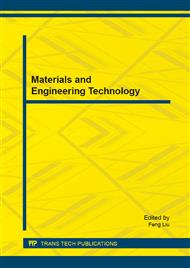p.177
p.181
p.187
p.193
p.197
p.202
p.206
p.210
p.214
Implementing Augmented Reality in Construction Projects
Abstract:
Augmented reality, which has been designed to improve the services in many application domains such as school education, military warfare, military trainings, industrial maintenance, retail and medical, can be defined in the simplest form as augmenting the real world with information from the virtual world. The main aim of this study, which presents an overview of an ongoing project, is to develop an innovative method by making a construction worker, foreman, equipment operator or a site engineer watch a very comprehensive and informative animation which will enable the said staff to perform or supervise all the phases of the activity he or she is in charge for in a more efficient, productive, safer and qualified manner by means of smart glasses using augmented reality systems. Basic trainings about the system will be given to target group, i.e. construction workers, foremen, operators, site engineers and managers working in the construction sites to apply the system on sites after all the system was tested. After the testing, to determine the effectiveness of this system, semi-structured interviews and survey questionnaires will be conducted among the mentioned target group. Therefore, the potential benefits of this system to the construction industry can be determined. There are relatively few studies about the implementations of augmented reality technology in construction. The outputs to be attained in the end of the study have the potential of improvement of time, cost, quality and safety parameters.
Info:
Periodical:
Pages:
197-201
Citation:
Online since:
January 2015
Authors:
Keywords:
Price:
Сopyright:
© 2015 Trans Tech Publications Ltd. All Rights Reserved
Share:
Citation:


